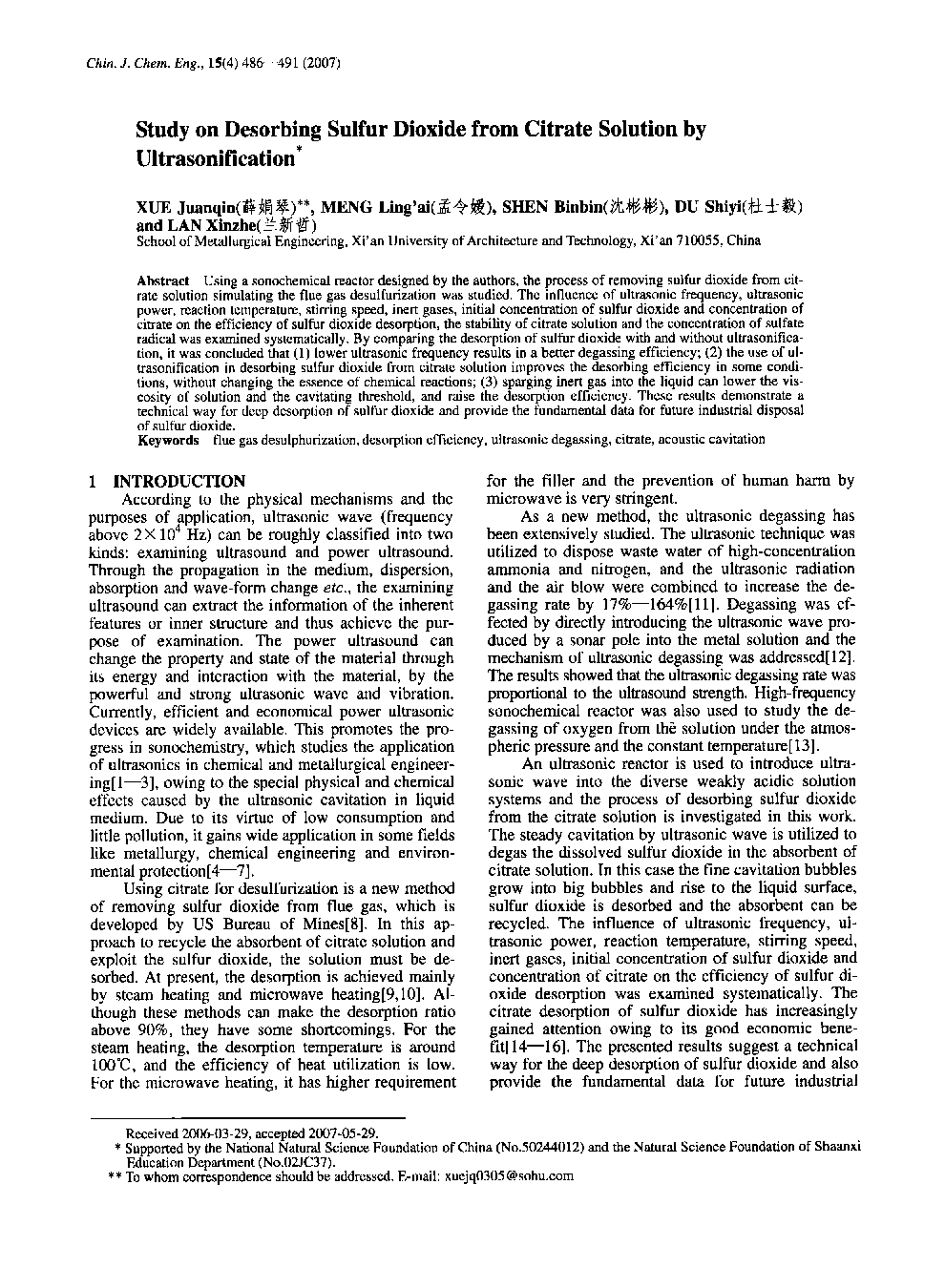| Article ID | Journal | Published Year | Pages | File Type |
|---|---|---|---|---|
| 168002 | Chinese Journal of Chemical Engineering | 2007 | 6 Pages |
Using a sonochcmical reactor designed by the authors, the process of removing sulfur dioxide from citrate solution simulating the flue gas desulfurization was studied. The influence of ultrasonic frequency, ultrasonic power, reaction temperature, stirring speed, inert gases, initial concentration of sulfur dioxide and concentration of citrate on the efficiency of sulfur dioxide desorption, the stability of citrate solution and the concentration of sulfate radical was examined systematically. By comparing the desorption of sulfur dioxide with and without ultrasonification, it was concluded that (1) lower ultrasonic frequency results in a better degassing efficiency; (2) the use of ultrasonification in desorbing sulfur dioxide from citrate solution improves the desorbing efficiency in some conditions, without changing the essence of chemical reactions; (3) sparging inert gas into the liquid can lower the viscosity of solution and the cavitating threshold, and raise the desorption efficiency. These results demonstrate a technical way for deep desorption of sulfur dioxide and provide the fundamental data for future industrial disposal of sulfur dioxide.
